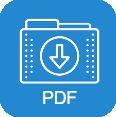Casting Brass Bushings Vs Oil Impregnated Bronze Bushings
Author:admin Date:2023-07-20
A bushing is a component that helps two parts move smoothly by reducing friction. It can be made of various materials based on the operating conditions, including brass and bronze.
Choosing the right material can make the difference between a project that works well or fails miserably. Both brass and bronze offer unique advantages for certain tasks.
Casting
Casting Brass Bushings are available in cast and oil-impregnated varieties. Both are durable and provide excellent friction-reducing properties, but they are manufactured through different processes. Understanding these differences can help determine which type is best for your application.
Bronze alloy casting uses an advance technique called continuous casting, which produces metal with a finer grain structure and stronger mechanical properties than the traditional turning process. This casting method also allows for a more precise production of the finished product.
The cast bronze bushing is made by gravity feeding the bronze powder into a die set that matches the desired bushing size. The powder particles are then pressed together and bonded by a procedure called sintering. The sintering process increases the part strength while decreasing the porosity of the material to about 25%. The part is then vacuum impregnated with oil to make it self lubricating. These features allow the bushing to withstand higher load requirements than the powdered metal product, and require minimal maintenance.
Oil Impregnation
Bronze bushings that are oil impregnated require minimal maintenance because they are self-lubricating. This feature helps reduce friction between mating shafts and other components in the system. It also eliminates the need to constantly monitor and replenish lubricants, which saves time and money for plant maintenance managers.
This process involves coating the surface of the bronze powder with a specialized oil, then drying it to prevent the oil from evaporating. The oil impregnation also increases the density of the bronze, which helps to decrease the amount of wear and tear that occurs.
The resulting bushings are more durable and offer higher resistance to shock, impact, corrosion, and wear. This increased durability and longevity reduces the need for replacement parts, which further lowers operating costs. Moreover, the self-lubricating properties of these bushings help to prevent rust and other harmful deposits from forming on the bronze alloy. The lubricating oil also provides protection from high temperatures and harsh environments.
Powder Metallurgy
The metal powder manufacturing process is one of the most economical and efficient ways to produce bronze bushings. It produces parts that are near-net shape with little or no machining needed. This is accomplished by combining bronze powder with a binder. The result is a self-lubricating component with excellent mechanical properties.
The powder metallurgy process uses four primary steps: powder preparation, mixing and blending, compacting, and sintering. Each step has its own specialized equipment.
Machining
A brass bushing is a component that helps two other parts move together by reducing friction. They can be designed in a wide variety of ways depending on what the bushing is used for. Some examples are ball, needle, flange, or sleeve bearings.
The machinability of brass is one of its most advantageous properties. This means that it can be machined very easily, especially when it is CNC machined. This is why many manufacturers choose to use brass for their machining applications.
It is also possible to hand file out phosphor bronze bushes if they are too tight for the host. However this is a slow process & will probably damage the host part. A better solution is to turn up a thick collar that fits over an extractor bolt made from tensile threaded bar, then use the nut on this bolt to slowly & evenly remove the bushing. It is also worth trying to warm up & freeze the host to try & break any adhesions before starting to machine it.



 English
English Español
Español Deutsch
Deutsch
















